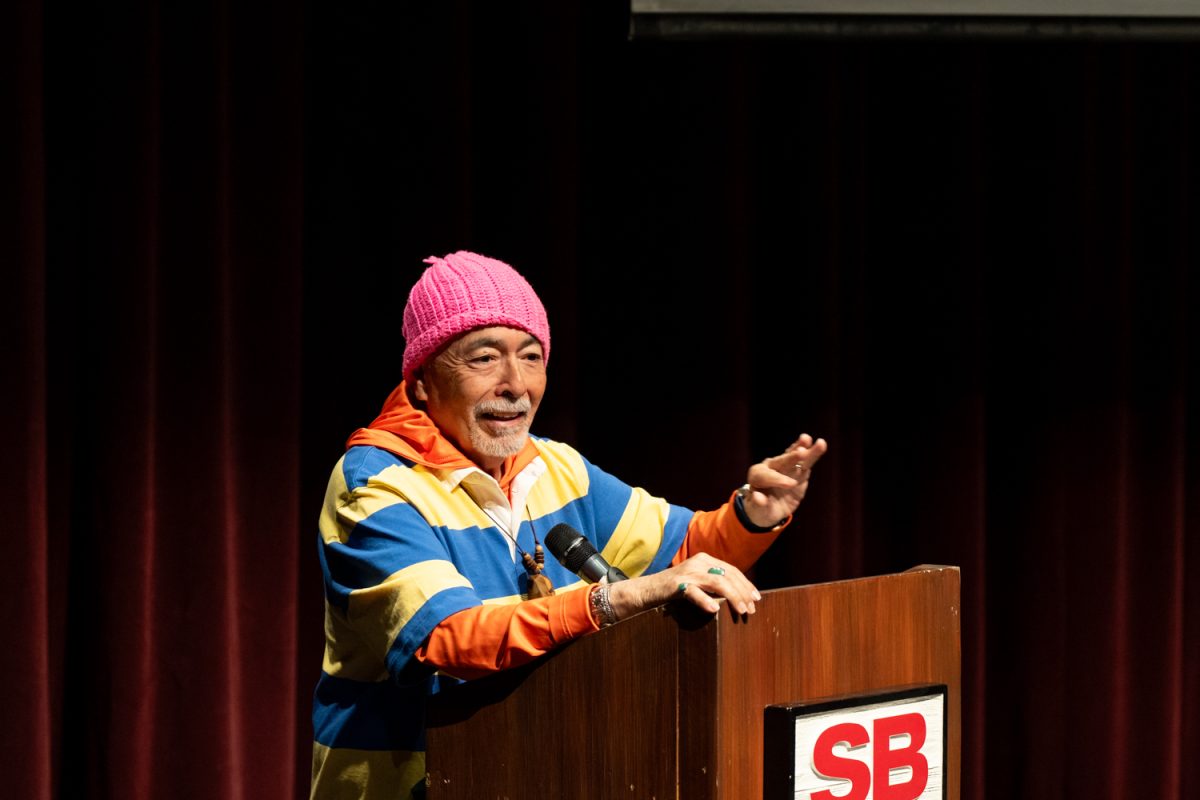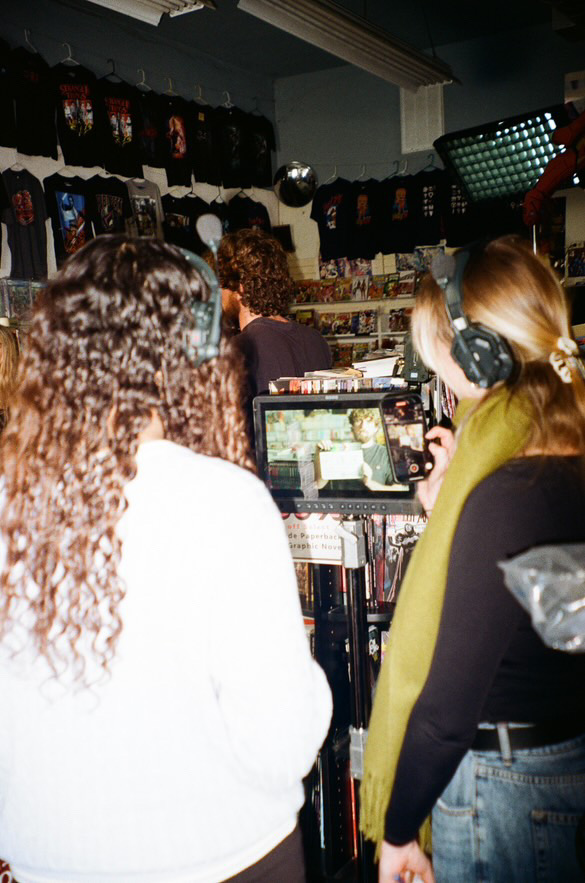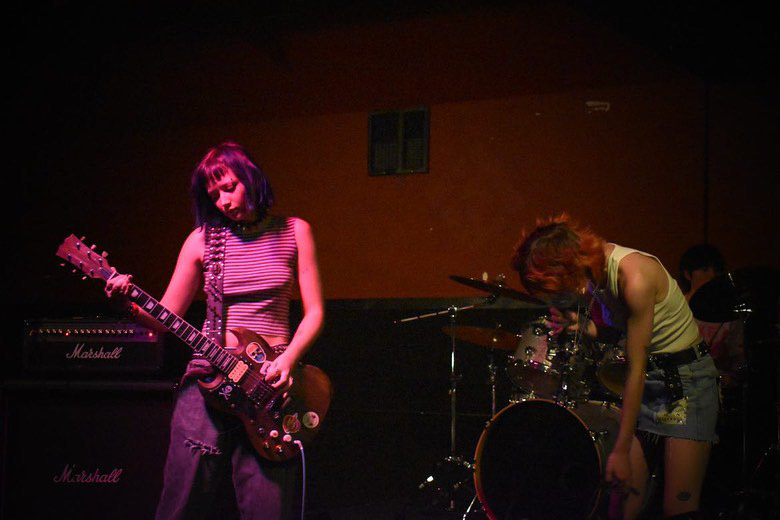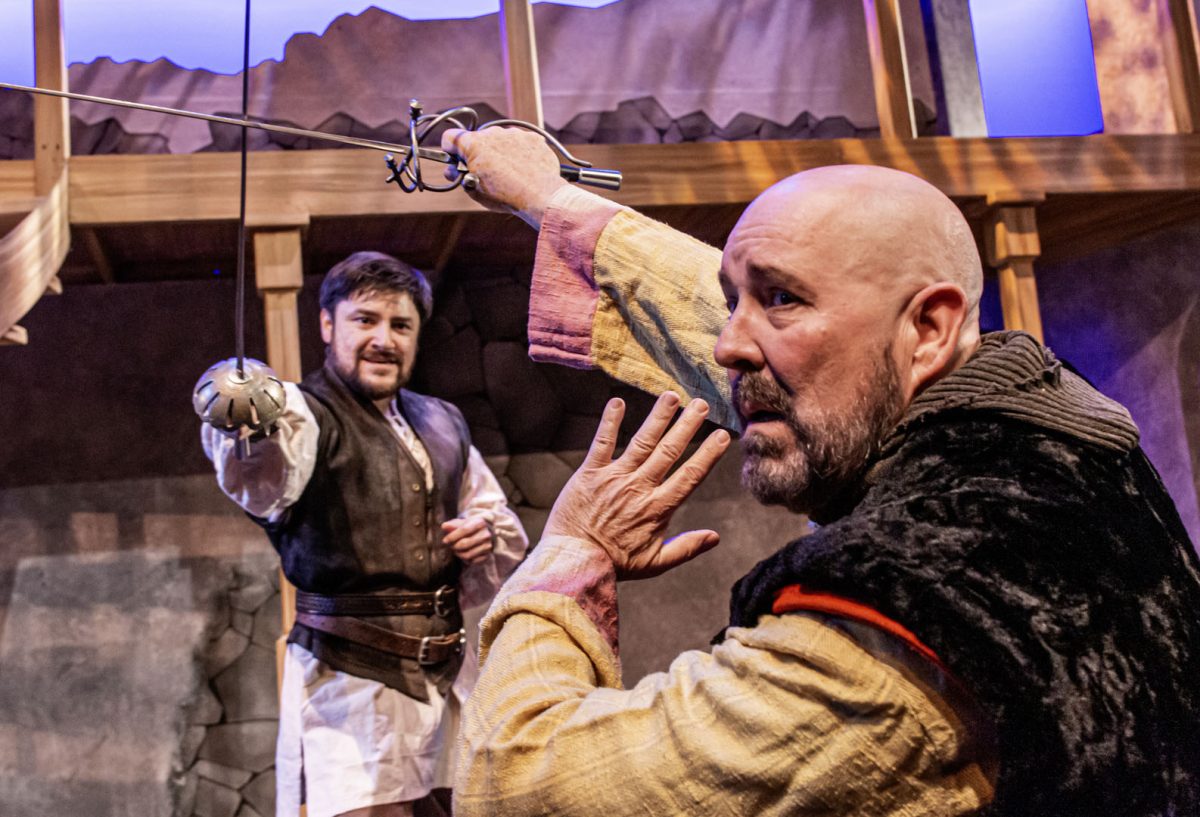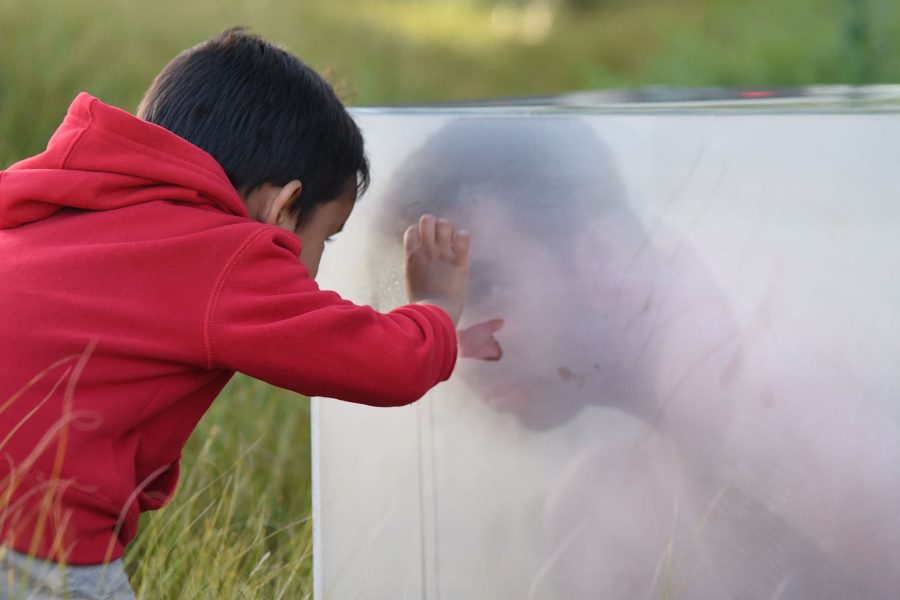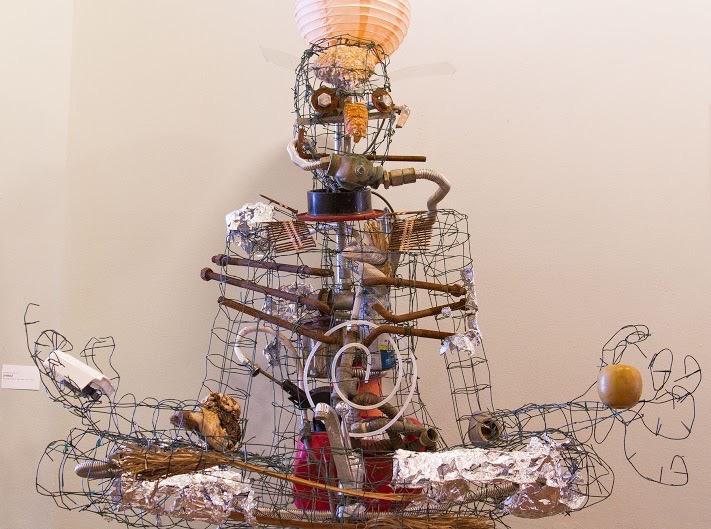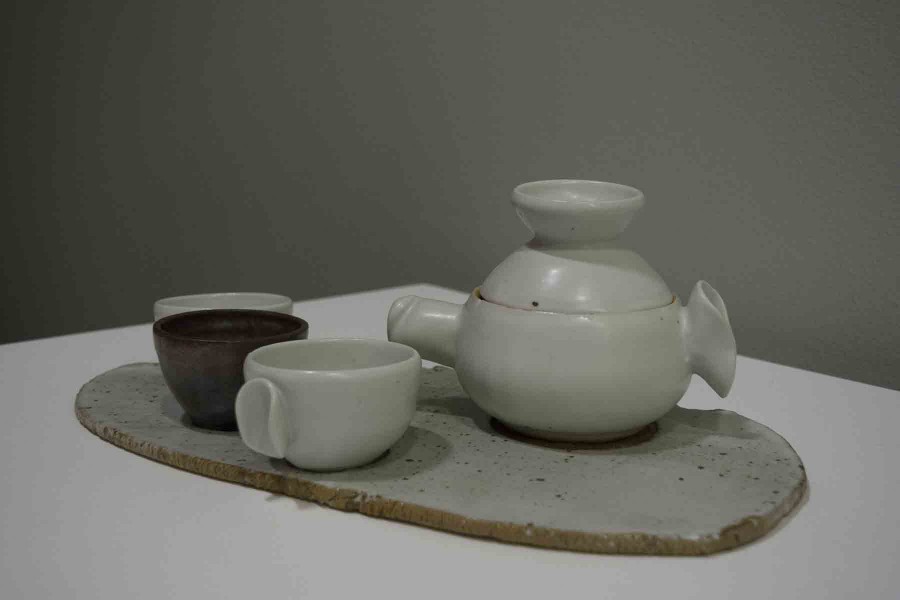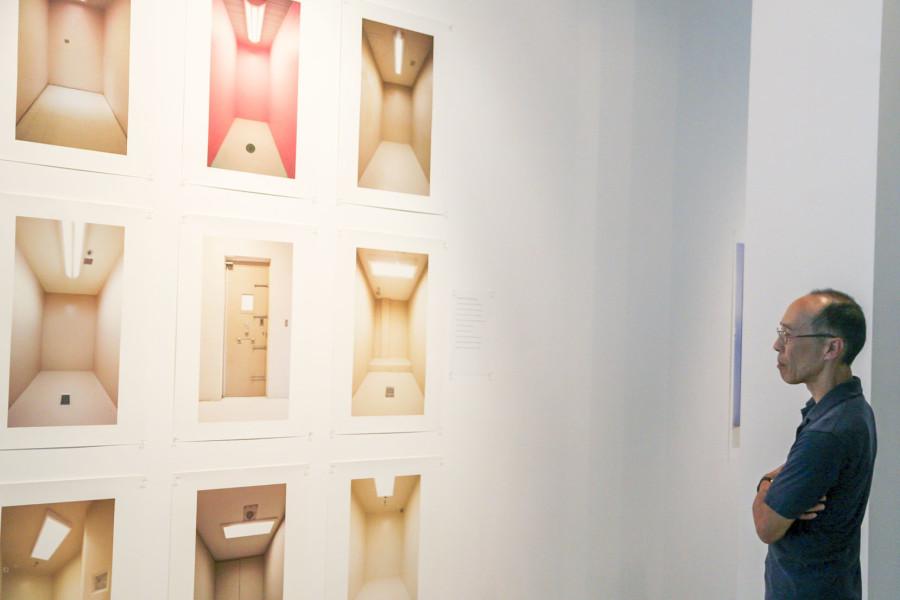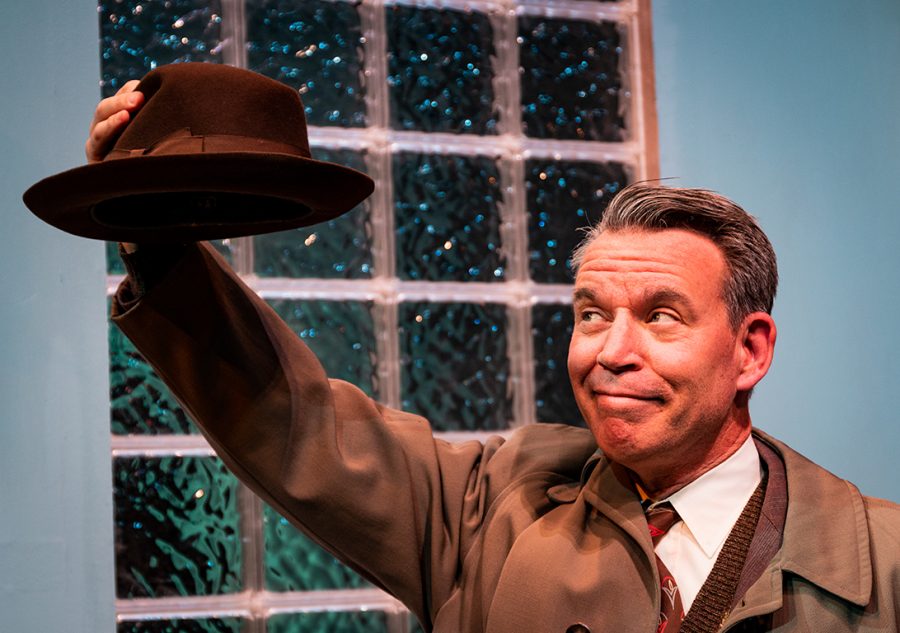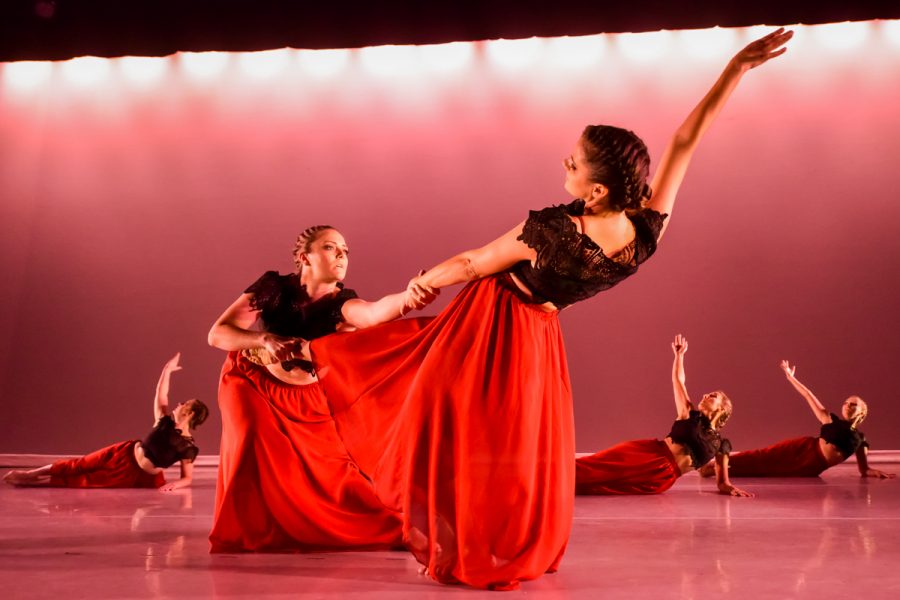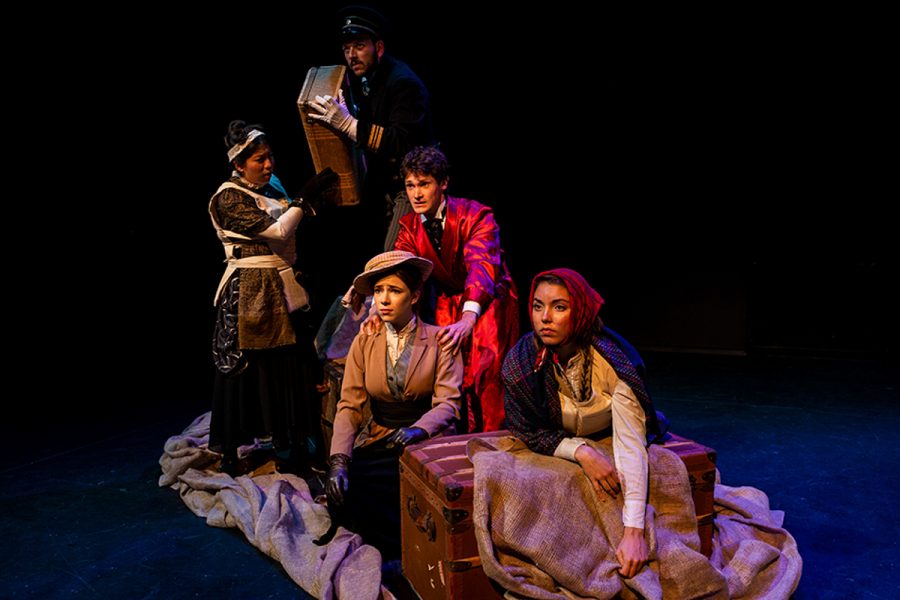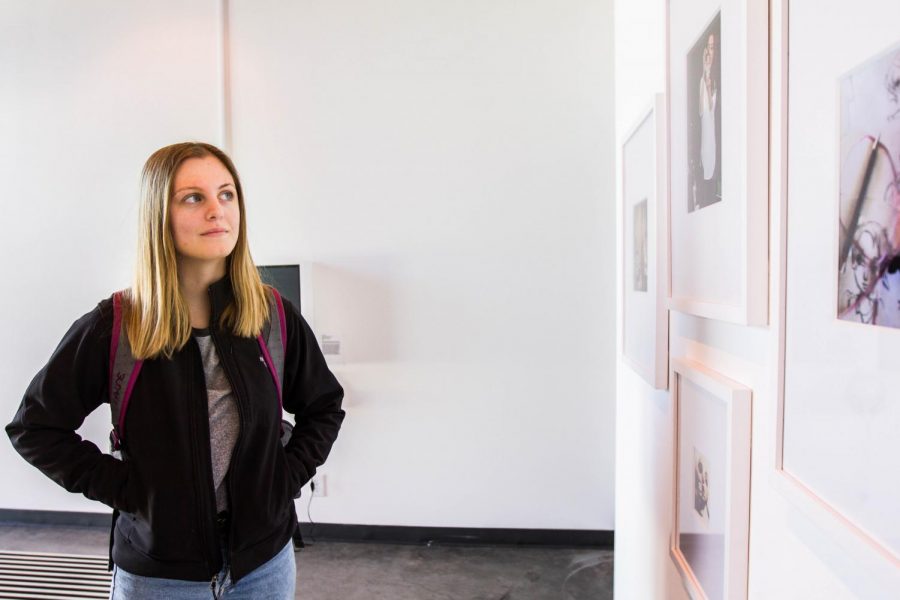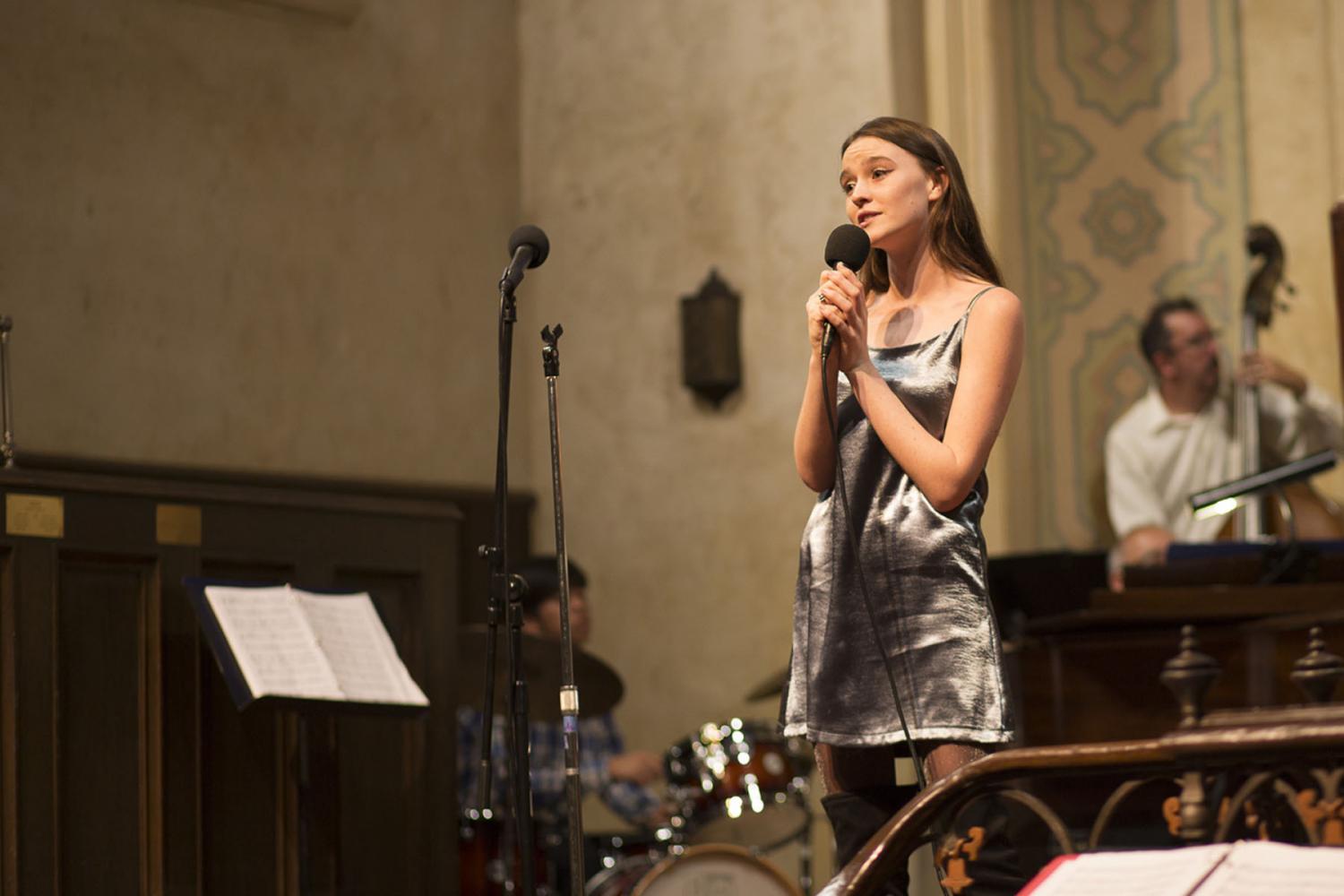City College’s Atkinson Gallery is currently hosting Design Professor Edward Inks’ last exhibit to celebrate his retirement from the college.
The exhibit, titled “Ed Inks Has Left The Building,” showcases work from as early as 10 years ago and includes 15 sculptures made from bronze, steel, lead, concrete and aluminum. Three photographs also display grand sculptures Inks created during his artistic journey.
In an interview earlier this week, Inks said the art displayed in his exhibit fits into the two themes of cellular construction and mentorship.
“The exhibit displays some earlier pieces,” Inks said. “They were inspired by the transition from losing a mentor and becoming one, and cellular division.”
Many of the sculptures represent mitosis, cellular division. His cast aluminum sculpture, “tickled pink,” stood out to me from the rest. The light pink piece portrays one cell splitting in the middle and dividing itself into many cells. The artwork seems to bring a biology book to life, by depicting science in a vivid, detailed way.
His piece, “Musical Chairs,” best communicates the mentorship theme. It is accompanied by a photograph of his 2006 “Musical Chairs” steel and concrete sculpture, from the Westmont College Ridley-Tree Museum of Art. Inks uses chairs in some of his other pieces but in “Musical Chairs” they connect to each other, symbolizing co-dependence.
Two chairs are joined by their top rails to form a bridge. The bridge symbolizes balance and how things need to be in sync in order to be successful. It demonstrates how things are interconnected and challenges us to find balance in ourselves.
Similar to a relationship between a teacher and student, the teacher must work alongside his or her student for both of them to succeed. Through “Musical Chairs,” Inks prompted me to reflect on the fact that everything is connected somehow. It reinforced the importance of balancing both thoughts and actions to accomplish one’s goals.
My favorite sculpture of the exhibit was the “up to no good” 2011 brazed steel sculpture, mounted high on the wall in the gallery. The kettle shaped sculpture hung over the heads of the audience with the spout pointing downwards directly at them. The position of the spout and the name of the sculpture together conveyed a mischievous, childish energy. I pictured water falling out and drenching all of the people admiring the piece from below.
Overall, “ Ed Inks Has Left The Building” does a great job in capturing Inks’ development from the past decade and commemorating his 25 years of teaching at City College.
The exhibit earns four stars. I recommend it to those who enjoy dissecting an artist’s work to find ways it relates to their own experiences. The works will also easily connect with those interested in Biology, because sculptures like “tickled pink” changed how I view cells.
Gallery Director Sarah Cunningham will host a live interview with Inks at 5 p.m. Wednesday, March 16 in Physical Science Building Room 101 to discuss his exhibit in more detail and his experience as an artist.
The exhibit will run until March 25 in Humanities Building in Room 202.


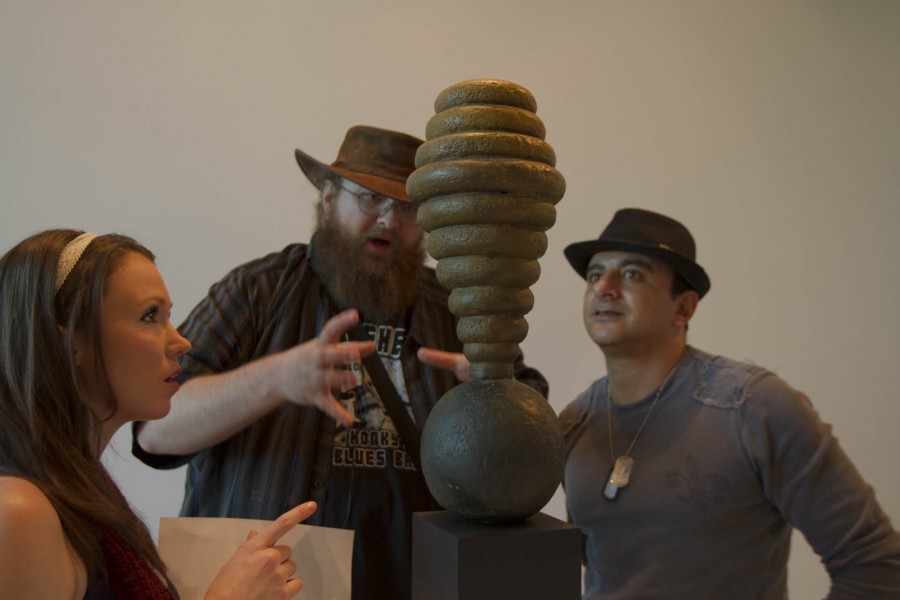
![Malia Hubbard admires the ceramic pieces created by students in Art 150, "Fundamentals of Ceramics" on April 10 in Santa Barbara, Calif. "I think [the gallery] is absolutely fabulous," Hubbard said. "Being able to see students work [is] so amazing."](https://www.thechannels.org/wp-content/uploads/2025/04/MGSStudentShow-1-1200x800.jpg)
